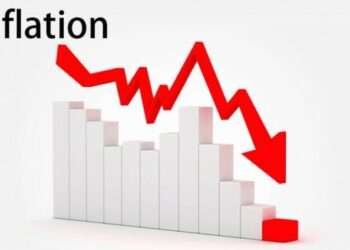The Bank of Ghana’s revised inflation target of 20% for 2024 has fallen short as inflation for December climbed slightly to 23.8%, up from 23% in November.
This marginal increase reflects the persistent economic pressures facing Ghana, driven largely by rising food prices and structural inefficiencies.
Food prices were the primary driver of the higher inflation rate in December, with food inflation rising to 27.8%, compared to 25.9% in November. This sharp increase underscores the vulnerabilities in Ghana’s agricultural supply chains, which often experience strain during the festive season due to heightened demand and limited supply.
Non-food inflation, on the other hand, experienced a modest decline, dropping from 20.7% in November to 20.3% in December. This divergence between food and non-food inflation highlights the disproportionate impact of rising food costs on the overall inflation rate, underscoring the need for targeted interventions in the agricultural sector.
The inflation rate for locally produced items climbed to 26.4% in December, up from 25.4% in November. This increase reflects ongoing challenges in domestic production, including rising input costs, supply chain inefficiencies, and limited infrastructure.
Imported goods also experienced a slight increase in inflation, rising to 17.9% in December from 17.6% the previous month. This trend indicates that global economic conditions, coupled with Ghana’s currency fluctuations, continue to influence the cost of imported items. Together, these factors reveal the dual pressures of internal and external inflationary forces impacting the Ghanaian economy.
Sectors with High Inflation Rates
Certain sectors recorded inflation rates higher than the national average of 23.8%, further straining household budgets and business operations. The alcoholic beverages, tobacco, and narcotics sector recorded the highest inflation at 28.4%, closely followed by food and non-alcoholic beverages at 27.8%.
Housing, water, electricity, gas, and other fuels also posted significant inflation at 26.3%, reflecting rising utility and energy costs. These high inflation rates in essential sectors exacerbate economic challenges for Ghanaians, particularly for low-income households that allocate a larger share of their income to these necessities.
Inflation rates across Ghana’s regions showed notable disparities, emphasizing the uneven economic pressures faced by different parts of the country. The Upper East Region recorded the highest inflation rate at a staggering 40.6%, indicating severe economic pressures in that area. Meanwhile, the Eastern Region registered the lowest inflation rate of 16.8%, demonstrating relative stability compared to other regions.
These regional variations in inflation rates point to localized challenges, such as varying levels of agricultural output, market accessibility, and infrastructural development. Addressing these disparities will require region-specific policies to ensure balanced economic growth across the country.
Failing to meet the 20% inflation target set by the Bank of Ghana has far-reaching implications for the economy. Persistently high inflation erodes consumer purchasing power, diminishing the ability of households to afford basic goods and services. It also creates uncertainty for businesses, making it challenging to plan and operate effectively.
High inflation affects savings and investments, as the value of money declines over time. For investors, Ghana’s inability to curb inflation could undermine confidence in the country’s macroeconomic stability, potentially affecting foreign direct investment inflows and economic growth.
Policy Responses and the Way Forward
The Bank of Ghana has employed various monetary policies, including raising interest rates, to combat inflation. However, these measures alone appear insufficient to address the structural factors driving price increases, particularly in the food sector. A more comprehensive approach is necessary to tackle inflation effectively.
Strengthening agricultural productivity through investments in modern farming techniques and infrastructure could stabilize food prices and reduce their outsized impact on inflation. Enhancing local production capacity in key sectors could also mitigate reliance on imports, shielding the economy from external shocks.
In addition to supply-side reforms, targeted social interventions, such as subsidies for essential goods or direct financial support to vulnerable populations, could alleviate the immediate impact of high inflation.
As Ghana transitions into 2025, managing inflation will remain a top priority for policymakers. Achieving macroeconomic stability will depend on the successful implementation of policies that address both the short-term drivers of inflation and the long-term structural challenges.
The outlook for inflation in 2025 will hinge on several factors, including global economic trends, currency stability, and the effectiveness of domestic policy measures. With coordinated efforts, Ghana can work toward creating a stable economic environment that fosters growth and resilience in the face of inflationary pressures.
READ ALSO: Smuggling Risks Rise as Ghana’s Cocoa Purchases Drop by 20% in December


















